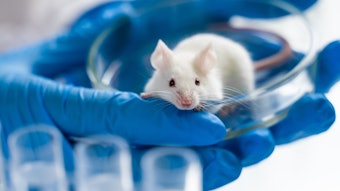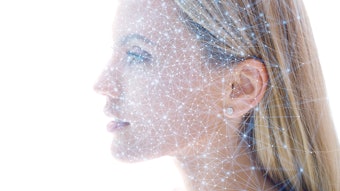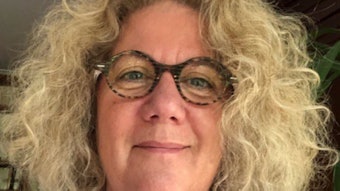
Editor’s note: This second of a two-part Q&A with beauty tech visionaries explores the untapped potential and outlook for digital technologies in beauty. Part I uncovered their drivers and uses. In this part, insights are provided by Haut.AI, MaquillAR Studio, NINU Perfume, Revieve, EveLab Insight and L'Oréal R&I.
Special thanks to our contributors, including:
- Anastasia Georgievskaya, CEO and founder, Haut.AI (AG),
- Sofi Chernyak, founder and creative director, MaquillAR Studio (SC),
- Marko Matijevic, founder and inventor, NINU Perfume (MM),
- Irina Mazur, CPO and CMO, Revieve (IM),
- Nick Howard, director of global strategy, EveLab Insight (NH) and
- Matthieu Cassier, director of transformation and digital, L’Oréal R&I (MC).
C&T: What can product developers learn from beauty consumers’ use of digital technologies?
At-home Convenience, Remote Clinical Studies
AG: I think today’s consumer behavior in beauty tech is all centered around using advanced technology from the comfort of their home. We see a clear shift toward e-commerce and at-home beauty experiences, as consumers increasingly prefer solutions that fit seamlessly into their daily routines.
For product developers, this means that the focus should be on creating remote clinical studies that are easily accessible outside of a CRO (contract research organization) office. Instead of relying on complex processes, where the consumer needs to travel to facility – and spend at least 30 min [acclimating] their skin … – beauty tech innovations need to be built into devices or platforms consumers can use at home This approach ultimately mimics how consumers experience products “in the wild.”
Individualized, Inclusive Attention
SC: First and foremost, it is about consumers’ call for personalization. Today we are in pursuit of products and brands that resonate with our unique identities and as a result, both technology and product development teams must work together to cater to modern industry standards.
One example of this is the Virtual Try-On effect for the Invisible Cover Foundation we designed for Catrice at MaquillAR Studio, which showcased a staggering line of 40 different shades. Nowadays it’s not just about offering a wide shade selection; it's about making each individual feel seen and letting this translate through all channels and brand experiences.
Seamless, Self-controlled Experience
MM: Beauty consumers are increasingly using AR for virtual try-ons, AI for personalized skin care or fragrance recommendations, and social media platforms for reviews and tutorials. They expect convenience, customization and a seamless digital experience when exploring beauty products. NINU integrates AI to offer customizable fragrances, allowing users to create their unique scents with ease via an app, giving them control and personalization at their fingertips.
Behavioral Data, Demographic Context, Real-time Feedback, Trends Forecasting
IG: Product developers can draw even deeper insights from consumer behavior data gathered through AI and AR experiences, enabling them to refine their product strategies at multiple stages of development. These technologies not only offer a comprehensive understanding of individual preferences, but also provide valuable demographic and environmental context, such as regional climate, age-specific concerns and even lifestyle choices.
The integration of real-time consumer feedback enables product developers to be agile in adjusting formulations and improving product efficacy."
For example, AI can detect that consumers in certain age groups are particularly concerned about anti-aging and sun protection, while in other regions, there is a rising interest in skin barrier repair due to increased pollution levels. This segmentation allows product developers to create niche solutions tailored to specific concerns. Instead of developing a one-size-fits-all product, brands can focus on designing targeted formulas — like sun protection with anti-aging benefits for mature [consumers] or detoxifying skin care lines that shield against pollution.
Moreover, the integration of real-time consumer feedback enables product developers to be agile in adjusting formulations and improving product efficacy. If consumers consistently report dissatisfaction with certain product textures or scents, brands can quickly pivot, reformulate and even relaunch products that better align with consumer preferences. For instance, if makeup users in one region favor matte finishes while another market shows a preference for dewy looks, developers can create region-specific formulations, offering consumers the exact finish they desire based on local beauty trends.
In addition, beauty tech innovations allow product developers to forecast future trends. AI-driven insights may reveal subtle shifts in ingredient preferences, such as a growing demand for clean beauty, vegan formulations, or waterless skincare in sustainability-driven markets. By spotting these emerging trends early, developers can proactively design products that align with future market demands.
Tracking Consumer Needs, Targeting Lifestyles and Habits
NH: AI not only enables a more unique consumer experience, but when applied to data analytics, companies can better track and predict consumer needs. This leads to more efficient R&D processes and even better product development. When it comes to personalization, the products themselves aren't the only factor that will affect the consumer's experience with the product. Lifestyle (sleep/nutrition) and environment (temperature/humidity) can also influence the consumer's relationship with the products. By understanding, at a city or regional level, the habits and environment their customers live in, companies can use AI and skin analysis data to make better recommendations or even formulate products for specific areas.
Brands are often reformulating products for different skin tones and ethnicities. Now, imagine if they could further refine the products to improve outcomes in different humidity or pollution levels. A brand could create a skin care line that includes customizable serums, where users can select active ingredients based on their unique skin needs, like hydration, anti-aging or acne treatment, depending on how often they travel or where they are headed. This approach not only empowers consumers to take control of their skin care, but also fosters brand loyalty by showing that the brand understands and responds to their specific requirements.
C&T: How have digital technologies helped to improve beauty products, or enabled those that previously seemed impossible?
Making Products Relevant, Uncovering New Chemistries, Speeding Up R&D
AG: Since we've already touched on AI-powered skin assessment, it's worth noting how this technology goes beyond just benefiting consumers — it also provides brands with a wealth of valuable data. These tools can collect insights on skin concerns, trends and needs across different age groups, skin types or even genders. Of course, all of this must be managed within the guidelines of data protection and other privacy regulations.
But for example, brands might discover that a certain age group is experiencing a rise in specific skin concerns like hyperpigmentation or dryness. With this kind of information, they can tailor their product development to better address these issues, creating more targeted skin care solutions. It essentially helps brands innovate in ways that align with real-world skin profiles, making products more relevant and effective for their audience.
In addition to data-driven insights, AI is playing a transformative role in discovering new molecules, which were previously either undiscovered or too complex to identify through traditional methods. Machine learning algorithms can analyze vast databases of chemical compounds, identifying potential new ingredients or active molecules that have desirable properties for skin care, such as anti-aging or hydration.
One of the key advantages of AI in this process is its ability to predict how these molecules will interact with the skin. By modeling the molecular structure and simulating its effects on different skin types, AI allows to discover new compounds that are more effective and safer, without the need for extensive physical trials early in development. This can significantly speed up the R&D process, helping companies to bring new products to market faster while reducing the costs associated with trial-and-error testing.
Transparency and Educating Consumers, AI-powered Design
SC: Today we are [entering] into the age of transparency. In a world that’s becoming increasingly conscious of what we put on our skin, tools like the Yuka app shine a spotlight on ingredients, edifying consumers about potentially harmful substances lurking in their favorite products. Technology that educates consumers not only empowers individuals to make informed choices, but also propels the dominance of clean products. Knowledge at consumers’ fingertips is reshaping the industry and setting new norms that were once thought to be an attribute of just a few outliers.
Another trend of 2024 is the AI-powered design. A prime example is the Prada Paradoxe Digital Flower perfume, where AI steps in to enhance formulations. Today it's a blend of tradition and innovation that results in beauty brands that resonate with the desires of modern consumers.
Precision Innovation, Bespoke Beauty on Demand
 In the case of NINU, AI technology plays a crucial role in the creation of personalized fragrances that adapt to each user's body chemistry. This level of personalization — providing more than 100 fragrance combinations — would have been impossible in traditional perfume manufacturing.NINU
In the case of NINU, AI technology plays a crucial role in the creation of personalized fragrances that adapt to each user's body chemistry. This level of personalization — providing more than 100 fragrance combinations — would have been impossible in traditional perfume manufacturing.NINU
MM: Digital technologies have drastically transformed the beauty industry by enabling precision and personalization that were previously unattainable. AI and machine learning algorithms now allow for detailed skin analysis and personalized product recommendations based on individual needs and preferences. This has led to the creation of skin care and beauty routines that are uniquely tailored to each consumer, boosting product effectiveness and satisfaction.
For example, virtual try-ons using AR have empowered consumers to test different shades of makeup or hair color without ever stepping into a store, creating a more immersive and interactive shopping experience. 3D printing has also paved the way for bespoke beauty, allowing for on-demand production of customized products, such as foundations that match individual skin tones with extreme precision.
In the case of NINU, AI technology plays a crucial role in the creation of personalized fragrances that adapt to each user's body chemistry. This level of personalization — providing more than 100 fragrance combinations — would have been impossible in traditional perfume manufacturing, where mass-market scents dominate. The ability to continuously adapt and customize based on data provides NINU with a competitive advantage in delivering tailored experiences, which digital technologies make possible.
Hyper-personalization, Immersive and Informed Shopping, Dynamic Data-driven Approaches
IM: Digital technologies have completely transformed the cosmetics and personal care industry, making what was once unimaginable now a reality. AI and machine learning are at the core of this shift, allowing brands to deliver hyper-personalized products and experiences. Skin care and makeup solutions can now be customized to match each consumer’s unique skin type, tone and concerns, ensuring that products are as effective as they are tailored. What once required expert consultations can now be done from home through AI-driven beauty advisors, offering real-time insights into skin health and personalized product recommendations.
AI-driven insights into consumer preferences help brands create more eco-conscious products, while virtual product testing reduces the need for physical samples and animal testing, minimizing the industry’s environmental footprint."
The rise of virtual try-ons using AR has redefined how consumers shop for beauty products. From experimenting with different makeup looks to visualizing how skin care products might affect their skin, consumers can now test and try before they buy — creating a fun, immersive and informed shopping experience. This interactive approach not only boosts consumer confidence, but also increases the likelihood of purchase, as customers are better equipped to choose the right products for their needs.
These innovations have also accelerated product development and innovation cycles. AI enables brands to analyze consumer data at scale, predicting trends and helping fine-tune products that cater to specific demands, such as clean beauty or eco-friendly formulations. The ability to simulate product performance digitally reduces the time and resources needed for traditional testing, leading to faster launches and more innovative product offerings.
Smart skin care devices are another leap forward, combining AI with IoT technology to offer real-time, personalized skin care treatments. These devices analyze skin conditions daily, adjusting their treatments to provide optimal care, something that was once impossible. Hair care has similarly benefited from AI technology, with personalized hair solutions that adapt based on environmental factors, hair texture and scalp health.
Sustainability is also being enhanced by these technological advancements. AI-driven insights into consumer preferences help brands create more eco-conscious products, while virtual product testing reduces the need for physical samples and animal testing, minimizing the industry’s environmental footprint.
Data analytics have further transformed how brands understand and interact with consumers. By analyzing zero- and first-party data, brands can identify trends, optimize product recommendations and tailor marketing strategies to individual preferences. This data-driven approach enables beauty companies to remain agile, quickly adapting to shifts in consumer behavior and delivering products that align with emerging trends — whether it’s the demand for minimalist, ingredient-focused skin care or bold, creative makeup looks.
AI Skin Analysis and Precision Customization
NH: Digital technologies, especially AI skin analyzers, have revolutionized the beauty industry by enhancing product development processes. These advanced tools provide detailed insights into individual skin conditions, enabling R&D departments to formulate products that are not only effective, but also tailored to specific needs.
For instance, an AI skin analyzer can identify issues like uneven skin tone or excess oil production, guiding formulators to develop targeted ingredients that address those concerns. This level of precision in understanding skin efficacy ensures that new products meet consumer expectations and deliver real results, making previously impossible customization a reality.
Bypassing Time/Cost Constraints, Creating Digital 'Twins' for Skin, Hair
Today we believe digital and technology will revolutionize beauty science, opening a new era of breakthrough innovations that meet our consumers’ needs and desires in their infinite diversity."
MC: The beauty industry is on the verge of a seismic shift, fueled by a growing desire from consumers for personalized experiences, a more inclusive definition of beauty, and an unwavering demand for sustainability. At L'Oréal, we're not just observing these shifts; we have been actively preparing and pushing for them for a while now. This is the meaning of our motto "Seizing what is Starting," which has remained the same for 115 years. And just as Eugène Schueller, L’Oréal’s founder, saw the potential for science to revolutionize beauty, today we believe digital and technology will revolutionize beauty science, opening a new era of breakthrough innovations that meet our consumers’ needs and desires in their infinite diversity.
For our 4,000 researchers around the world, this means:
- Bringing scientific breakthroughs to market faster than ever. As one of the few cosmetics companies inventing new molecules, we are leveraging the power of digital technology to boost our discovery capabilities. Our latest Melasyl molecule is one of the perfect examples of this acceleration. This new proprietary ingredient works inclusively, across all skin tones, to address pigmented marks on the skin and improve their appearance. Melasyl is the result of rigorous tests involving 121 scientific studies and 18 years of research.
- Reinventing the way we innovate. By accelerating ways to formulate, evaluate, and deliver our innovations to our consumers.
- Pioneering a more sustainable future. Because data-driven insights and predictability are key to creating effective and sustainable solutions for everyone.
One example of how we're pushing the boundaries is in the creation of a new generation of green actives for hair care. Imagine a highly accurate virtual replica of hair built from millions of data points — this is a hair digital twin. It enables our researchers to understand and predict how potential green actives will interact with a variety of hair types, all in a virtual environment. This allows us to test at a scale and speed that would be impossible with traditional methods, bypassing the usual constraints of cost and time.
In the past, it would have taken months or even years to synthesize and assess how a new polymer would deposit on a hair fiber. Now, with our hair digital twin, we can run those same simulations on molecules that don't even exist yet, and we can do it in just a few days. This is one of the first steps toward our larger ambition to create incredibly powerful digital twins for both hair and skin.
C&T: What are key challenges to implementing digital technologies for the beauty industry?
Data Security and Compliance Restrictions, AI-ready Infrastructure
AG: One of the biggest challenges, particularly in the realm of AI, is the heavy reliance on data. Privacy and data security have become critical concerns, especially as regulations around AI and data usage continue to tighten, particularly in Europe. For example, while the General Data Protection Regulation (GDPR) and similar privacy rules are important for protecting consumers, they also create hurdles in accessing and utilizing the data that fuels AI algorithms.
Another significant hurdle is the lack of infrastructure capable of fully embedding AI into brand ecosystems. Many beauty companies don’t have the in-house technical capabilities to build and integrate AI-driven solutions from scratch."
Even when the data is anonymized, strict compliance requirements can limit the extent to which brands can leverage insights to create more personalized and effective products. Balancing innovation with regulatory compliance is a delicate challenge. In addition, it’s important for operators in this space to focus on data transparency and quality, ensuring that the data used to train AI models meets the ethical and legal standards required by these regulations.
Another significant hurdle is the lack of infrastructure capable of fully embedding AI into brand ecosystems. Many beauty companies don’t have the in-house technical capabilities to build and integrate AI-driven solutions from scratch. This is why more brands are turning to turnkey solutions, like Haut.AI, that provide the complete package: front-end interfaces, back-end systems and AI engines.
Affordability, Simplifying Design, Early Market Failures
SC: The beauty industry is facing some growing pains due to the wallet-busting entry costs, which keep smaller players watching from the sidelines. To address this, at MaquillAR, we build Augmented Reality solutions in partnerships and on the basis of publicly available software of such giants as Snapchat and TikTok. It's opening doors for companies of all sizes to join the virtual beauty revolution. In addition, AI capabilities are drastically simplifying digital design, which soon could lead to further expansion of the horizons in digital world-building.
The second challenge stems from trust issues arising from some early flawed experiences with beauty tech, both on the brand and consumer side. For example, some early virtual try-on attempts often fell short of consumer expectations. Yet, regardless of the solution, it is not too late for the long-running players in the market to debunk the skepticism about the efficiency and accuracy of digital projects with concrete metrics around sales and engagement.
Miniaturizing Hardware for Portability, Making Tech Intuitive
MM: One of the biggest challenges for NINU was developing the hardware. We needed to shrink complex technology into a compact, handheld device without compromising performance. Miniaturizing the components was crucial to ensure portability and ease of use, which took substantial engineering effort.
Another challenge is balancing advanced technology, like AI, with a simple, intuitive user experience. Consumers want innovation but it must be easy to use.
Cost and scalability are also concerns, as developing AI-driven solutions can be expensive. Additionally, data privacy is essential as personalized beauty requires sensitive information. At NINU, we addressed these issues by creating a user-friendly, portable fragrance device with refillable cartridges, making it both sustainable and accessible to the mass market.
Global Tech Savviness, Privacy Protection
IM: The beauty and skin care industry is constantly evolving, and trends and preferences differ around the world. As seen in Revieve’s latest global skin care report, some regions may embrace technological advancements more than others. For example, Asia-Pacific beauty/skin care consumers are mostly young, tech-savvy and heavily influenced by social media trends. These consumers enjoy innovative and high-tech skin care solutions more than those in other areas around the world, which may present a challenge in developing and implementing digital technologies worldwide.
Another key challenge includes balancing personalization and privacy, as brands and retailers can gain access to significant data about their customers when using these digital technologies. This is why it is important to develop solutions that provide advanced privacy protection and security to ensure consumers’ trust. Revieve’s platforms include CCPA and GDPR-compliant infrastructure for data transmission, processing and storage to ensure safety and privacy of any data entrusted to Revieve.
 A key challenge is balancing personalization and privacy, as brands and retailers can gain access to significant data about their customers using these digital technologies.Revieve
A key challenge is balancing personalization and privacy, as brands and retailers can gain access to significant data about their customers using these digital technologies.Revieve
Seamless Integration, Data Privacy
NH: While the potential is huge, there are challenges, too. One major hurdle is ensuring data privacy and security, especially since many technologies rely on personal data to provide tailored recommendations. Additionally, integrating these technologies seamlessly into existing product lines can be tricky and costly. Brands also need to ensure their target audience is comfortable using new tech, which can sometimes mean a learning curve for less tech-savvy consumers.
Collaboration and Empowering 'Augmented Researchers'
MC: One of the key challenges in bringing digital transformation to any industry, not just beauty, is that it requires more than just cutting-edge technology. It also demands new ways of collaborating and innovating together. That's why, at L'Oréal, we're investing as much in our people as we are in technology itself, because we want to empower them to thrive in this new era.
It starts with a deep understanding of our team's needs. By closely examining their roles, their daily tasks and challenges, their career aspirations, how they use technology, we're able to gain incredibly valuable insights into their individual situations. This level of understanding is essential because it allows us to design targeted onboarding and skills development programs that seamlessly align with each person's unique career path. We want to foster an environment where everyone feels empowered, where they have the resources they need to reach their full potential.
That's why we call our transformation program "Augmented Researchers" — and that name is very intentional. It reflects our core belief in the power of human ingenuity, amplified by technology. All the technologies we leverage and all the tools we develop are made to empower our researchers. Ultimately, we're empowering them to shape the future of beauty science — building an industry that's inclusive for each, and sustainable for all. This is how we'll keep offering the best beauty products and experiences, and staying at the forefront of our industry
Harnessing the Full Potential of Data While Maintaining Trust
Cassier adds that in making the transition to digital technologies, the industry is challenged by more than just their implementation; companies also are challenged to harness the full potential of the data collected, especially in a consumer-centric industry like beauty.
MC: Data is absolutely essential to this transformation. It's the foundation upon which everything else is built. Imagine having access to over a century's worth of beauty knowledge and insights – that's the power of L'Oréal's data. We're talking about the world's most comprehensive beauty database, a goldmine of over 11,000 terabytes of information at the fingertips of our researchers and other talents within the group, ready to unlock new possibilities.
The combination of this data heritage with AI and generative AI allows us not only to truly understand and meet the diverse beauty needs of our consumers, but also to "stand on the shoulders of giants," tapping into the collective genius of L'Oréal's researchers – past and present. This allows us to innovate in new ways and offer the best beauty products and experiences.
Take the example of developing our latest Vinyl ink Lipstick for Maybelline. The power of all the data gathered in the past in all our consumers tests, combined with some meta-trend analysis, helped us to design, for every country in the world, the most fitting and desirable shades. This is inclusivity powered by data and tech.
However, our group, and the industry in general, thrives on consumer trust. That's why at L’Oréal, consumer data will never become a commodity – it's a fundamental right. We are "privacy by design," meaning our consumers have control over their data – access, amendments, deletions – it's all in their hands. Transparency, legitimacy, proportionality and security – these aren't just words, they are the core principles guiding our approach to data privacy.
C&T: What new directions do you see for digital technologies in beauty?
Targeting Longevity Patterns, Predicting Behavioral Factors, Body Skin AI
AG: We believe the longevity trend will continue to grow, and AI will be instrumental in this. By identifying subtle age-related patterns and changes early on, AI can guide the development of new more effective anti-aging creams and procedures (as it is with drugs, right now).
We also anticipate AI systems becoming capable of integrating a wide range of data sources to offer highly personalized skin care solutions. These systems will consider behavioral factors (such as diet and physical activities) to provide proactive recommendations. For example, based on an individual’s lifestyle, AI could predict potential skin issues, such as the likelihood of developing pimples, and proactively order specialized treatments or products. This predictive capability will help prevent problems before they arise.
Another exciting frontier is the expansion of AI skin analysis beyond the face. Body skin AI has the potential to provide a comprehensive understanding of skin around the whole body. With this technology, consumers could receive tailored recommendations not only for face care, but also for body care products, including lotions, sunscreens and treatments for specific areas. By offering this more holistic view of skin health, body skin AI will help consumers maintain healthier, more radiant skin from head to toe, taking personalization in beauty to the next level.
Smarter and Adaptive Advertising, AR Glasses and Mirrors, Gamification
SC: In the coming years, we will see: how AI gets smarter in adapting to customers’ unique wants across all channels of advertising; how real world-focused brand experiences launch on massively adopted AR glasses; how AR mirrors get integrated into more and more spaces; how in-home smart beauty devices bring us to daily customization of skin care routines; and how gamification across all aspects of life create deeper knowledge about the consumer.
Real-time Beauty Biohacking, Technology x Lifestyle Integration
MM: In the future, AI-driven diagnostics, connected beauty ecosystems and biohacking for beauty will drive the industry forward. Smart beauty devices that automatically adapt to user behavior and AI-based skin care that evolves with the user will dominate. NINU fits into this future by offering smart, adaptive fragrance solutions that evolve with the user's preferences, combining technology with lifestyle and customization to meet the growing demand for personalized beauty experiences.
Advanced Personalization, Interactivity, Minimizing Over Production
 Consumers will be able to generate unique makeup looks or skin care routines based on preferences. Beauty brands could use this technology to create dynamic products that adapt to real-time conditions like weather or skin health.Image by Prostock-studio at Adobe Stock
Consumers will be able to generate unique makeup looks or skin care routines based on preferences. Beauty brands could use this technology to create dynamic products that adapt to real-time conditions like weather or skin health.Image by Prostock-studio at Adobe Stock
IM: As digital technologies evolve, the beauty industry is heading toward more advanced personalization and interactivity, with innovations such as Conversational AI, Generative AI and voice assistants driving the future.
- Conversational AI and voice assistants: Conversational AI will make beauty routines more accessible. Consumers can use voice assistants to ask for skin care advice or makeup recommendations, receiving tailored responses based on their needs. Voice assistants could also guide users through routines and tutorials, enhancing convenience and personalization.
- Generative AI: Generative AI will unlock new levels of creative expression. Consumers will be able to generate unique makeup looks or skin care routines based on preferences. Beauty brands could use this technology to create dynamic products that adapt to real-time conditions like weather or skin health.
- Ingredient transparency and holistic wellness: Consumers are increasingly seeking transparency and wellness-focused beauty. AI will help users dive deeper into ingredients, providing information on efficacy and sustainability. Future technologies could integrate beauty with overall wellness, offering recommendations that also support mental and physical health.
- Sustainability and data-driven innovation: AI will further drive sustainability, optimizing ingredient sourcing and packaging solutions. Personalized virtual try-ons and data-driven recommendations will reduce waste by minimizing product returns and over-production, helping the industry become more eco-friendly.
- AI-powered customization: Finally, AI will refine its ability to deliver hyper-personalized beauty experiences, using data to create customized routines that go beyond appearance to address lifestyle factors like sleep, stress and diet.
Holistic Skin Care Recommendations, Wearables to Track Skin Health
NH: Looking ahead, digital technologies in beauty may increasingly focus on overall wellness. Imagine apps that not only recommend makeup but also offer holistic skin care routines, incorporating mental health tips and self-care practices. There’s also potential for wearable devices that track skin health in real-time, providing insights to help users maintain their best skin. The future could blend beauty with well-being, promoting a more comprehensive approach to self-care.










